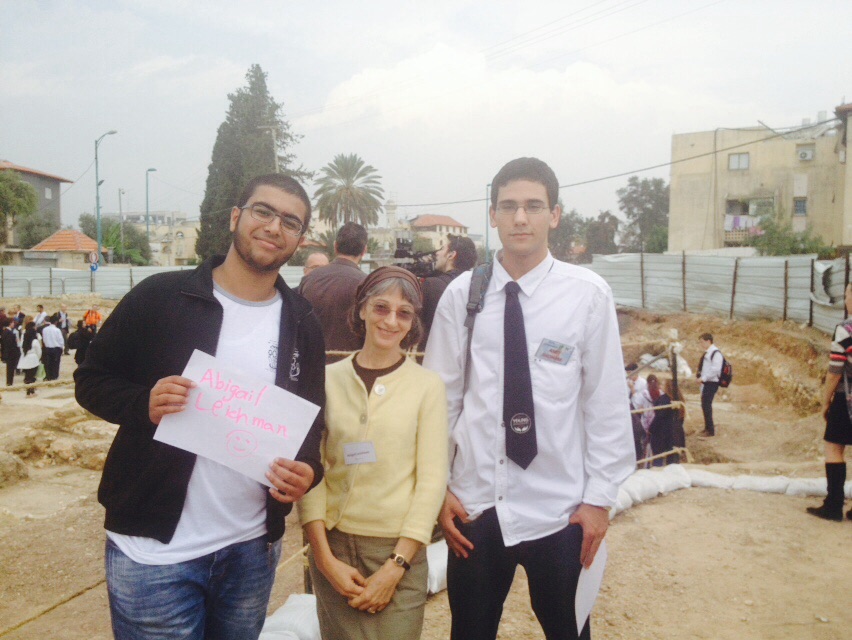“Someone is holding a big pink sign with your name on it,” a fellow journalist informed me as our bus approached the site of a newly discovered ancient mosaic in Lod, the middle-class Israeli city that wants to be known as much more than the home of Ben-Gurion International Airport.
Actually, there were two 15-year-old boys holding hand-lettered “Abigail Leichman” signs aloft among a group of Arab and Jewish teenagers greeting participants in a Government Press Office outing for journalists and diplomats to Lod on November 16. They handed me my name tag and a press kit about their hometown.
Deputy Mayor Aviv Wasserman had assigned each of us personal escorts from local high schools in this highly integrated city of 77,500 Jews, Muslims and Christians.
My companions for the day were Amer Mgarbh (Muslim) and Amit Shoham (Jewish). They live in different neighborhoods and go to different high schools — Amer to ORT and Amit to Darca – but have neighbors and classmates of all faiths.

Hanging out with the boys was a major highlight of our tour, which took us from the Roman-era mosaic to the cutting-edge Bank Leumi data center.
The amiable Amer told me that he likes to play soccer with his Arab and Jewish friends.
“We are like brothers,” says the oldest of seven siblings. Amer and his buddies like taking videos of themselves playing video games – a sort of Arab-Israeli “Wayne’s World” – and enjoy practicing Hebrew and English.

Amit introduced me to fellow members of the Lod chapter of Young Ambassadors, a program sponsored by the Foreign and Education ministries that trains teens in leadership and public-speaking skills and then sends them around the world telling the real story of Israel and “the conflict” to audiences of peers, diplomats, politicians and NGO officials.
“I want the world to know that Israel is good, and not bad guys like the BBC and other media say about us,” said Oshri Avraham, one of Amit’s friends in the Young Ambassadors.
I explained that ISRAEL21c has a similar mission, informing the world about Israel’s globally significant innovations in health, environment, technology, social action and other areas of achievement.
Amer and Amit walked me to the lane outside St. George Greek Orthodox Church, where a parade of children in youth movement uniforms was marching with their leaders to a Mass in celebration of St. George Day.

Christians make up about 10 percent of the population in Lod, and the church – which was destroyed by successive ancient conquerors and finally rebuilt permanently in the late 19th century — is a local point of pride as a shrine to the fourth-century martyr.
The church stands next to the al-Omari mosque constructed by the Mamelukes on the original site of St. George’s, so the sounds of church bells and muezzin prayer calls sometimes fill the air simultaneously.
Amer had never been inside a church and was eager to observe the service, while Amit and I went ahead to the Jewish-Arab community center where we would all have lunch together – kosher food on one table, halal food on the other.
As Amer started to enter the church, he was still clutching the sign with my name in pink letters.
“Do you want me to take that?” I asked, intending to put it into my backpack or a paper recycling bin. But Amer smiled and shook his head. “No, I want to keep it!” he declared.

















